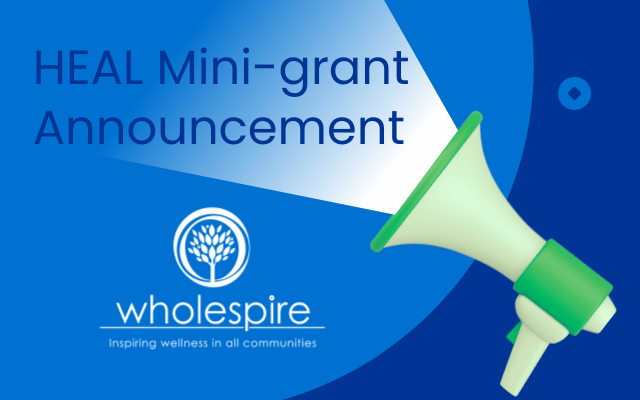
Wholespire announced the recipients of its latest Healthy Eating and Active Living (HEAL) Mini-grant to support local-level projects that increase access to healthy choices. Out of 73 applications, 11 community organizations were chosen to receive up to $6,000 each that will help South Carolinians lead healthier lives and prevent or manage chronic diseases.
All of the awarded applicants indicated on their application that community members were involved in the decision-making process and provided positive feedback about their projects. Studies show that when community members support policy, systems and environmental changes like creating a new walking trail, they will more than likely use that new public resource.
“Because of this particular question on the application, we can confidently say that people in South Carolina want something healthy to do and something healthy to eat,” said Meg Stanley, executive director at Wholespire. “It doesn’t make sense to us to invest money in a project that the people don’t want. This type of information also tells us how well applicants know their community.”
The following community organizations were awarded a 2023 HEAL Mini-grant:
- Knights Hill Historic Preservation Board, Inc. (Kershaw County): The Seniors Walking Trail at Knights Hill Park in Camden
- United Way of Kershaw County (Kershaw County): Vandal-resistant water bottle refill station at KC West Park in Lugoff
- SC School for the Deaf and Blind (Spartanburg County): Natural Playground for all students, especially those with sensory differences
- Greens and Things Farmers Market (Greenville County): Mobile market that accepts SNAP and serves the Shemwood community in Greenville, SC
- St. James Health and Wellness (Georgetown County): Walk into Health Walking Track to serve patients and the Sampit community
- Greenwood County First Steps (Greenwood County): Storywalk trail to promote outdoor family engagement, literacy and physical activity and activity kits to help children develop motor skills
- Truth Ministries (Marion County): Create a community garden to fight food insecurity for low-income families and individuals in Gresham, Marion and surrounding communities
- Blacksburg High School (Cherokee County): Expand the Growing Together student-led garden project in Blacksburg
- JBC Cares (Richland County): Improve a community walking trail in Hopkins
- Fairfield County Parks and Recreation (Fairfield County): Enhance Willie Lee Robinson Park by adding a swing set for children to play in Blair
- United Way of Chesterfield County (Chesterfield County): Provide the towns of Ruby and Jefferson with a Born Learning Trail
The HEAL Mini-Grant initiative is made possible by a grant from the BlueCross® BlueShield® of South Carolina Foundation. BlueCross BlueShield of South Carolina is an independent licensee of the Blue Cross Blue Shield Association.

